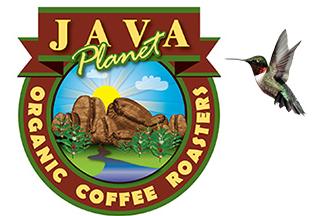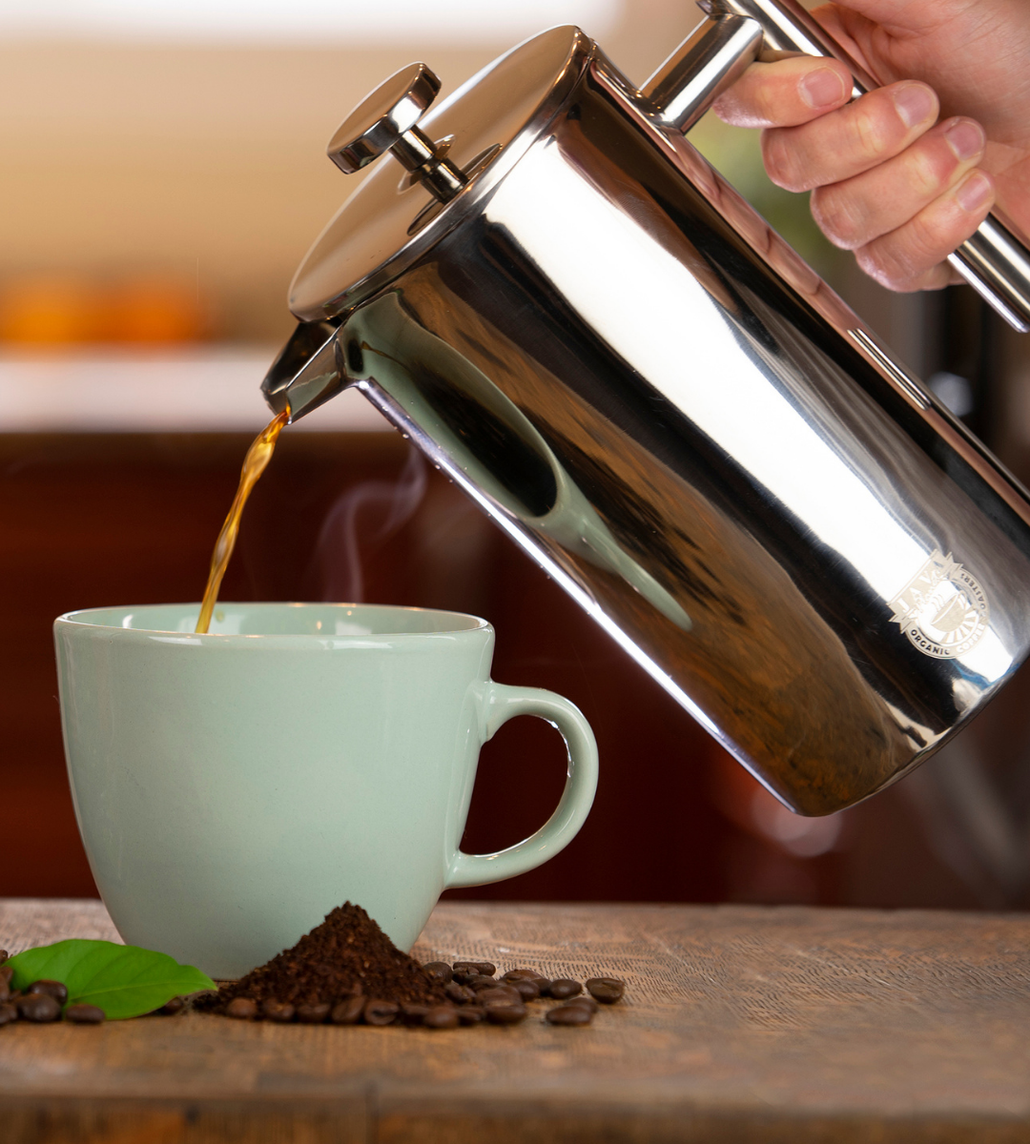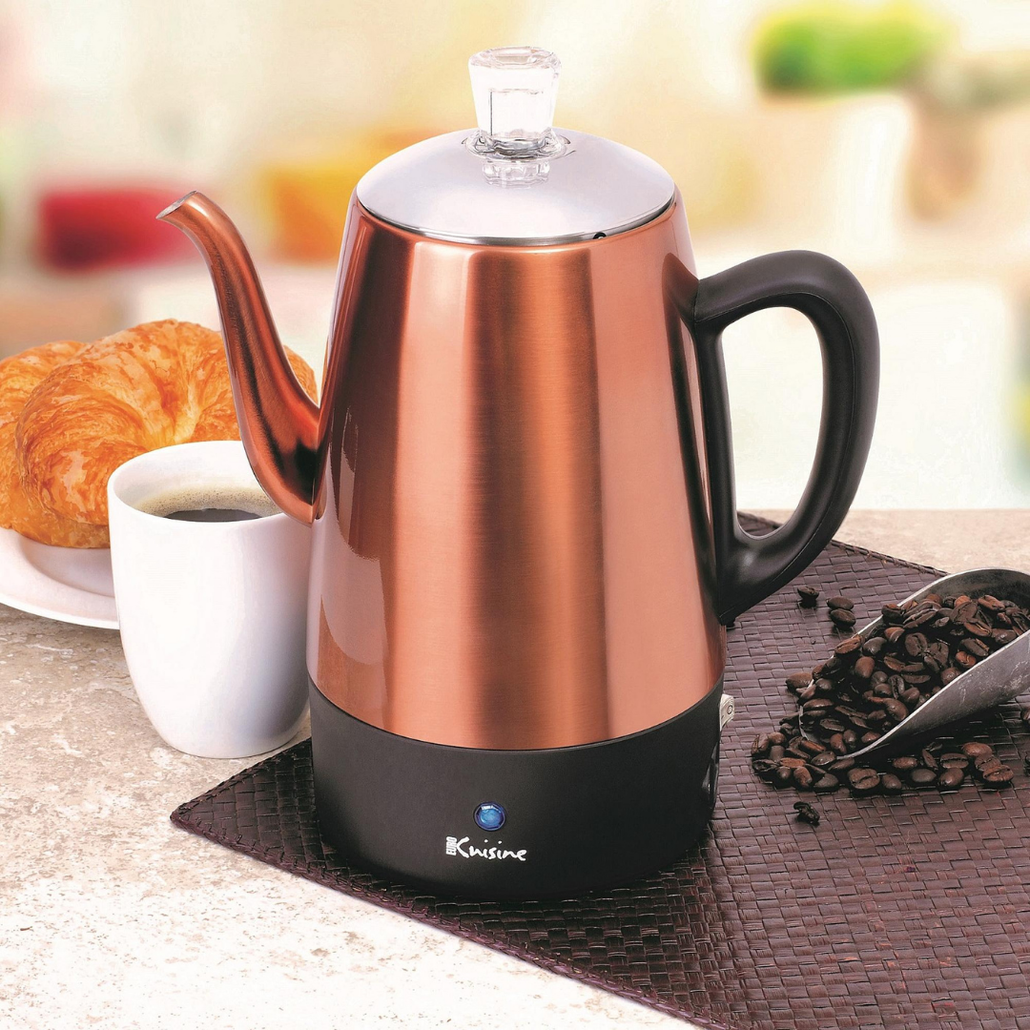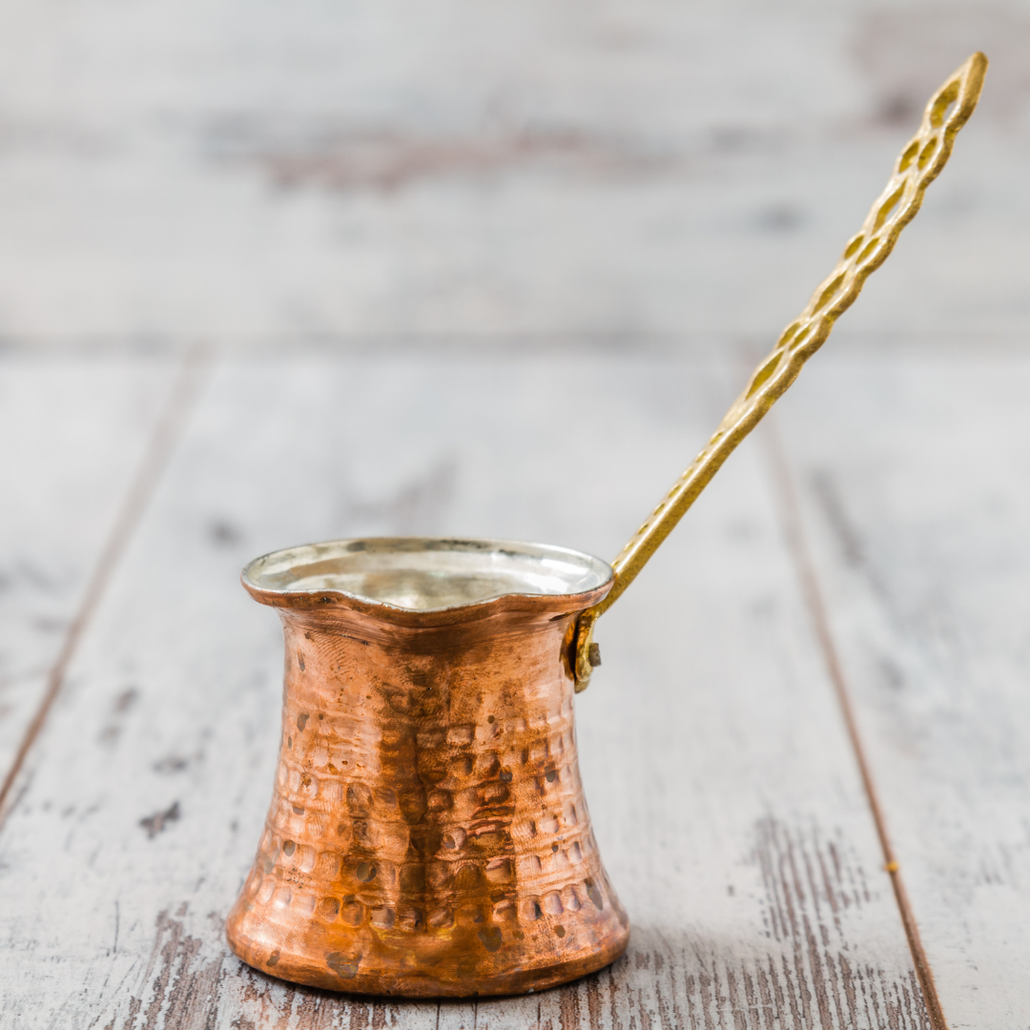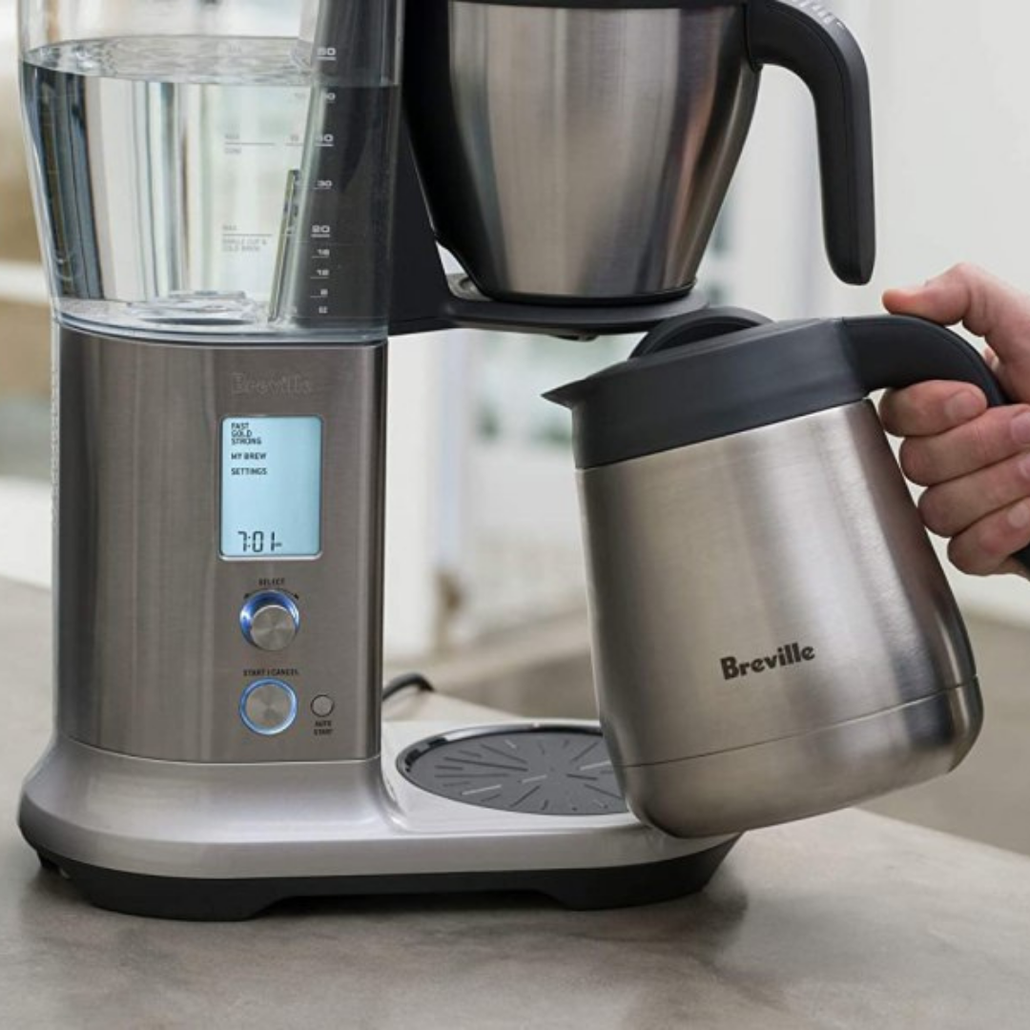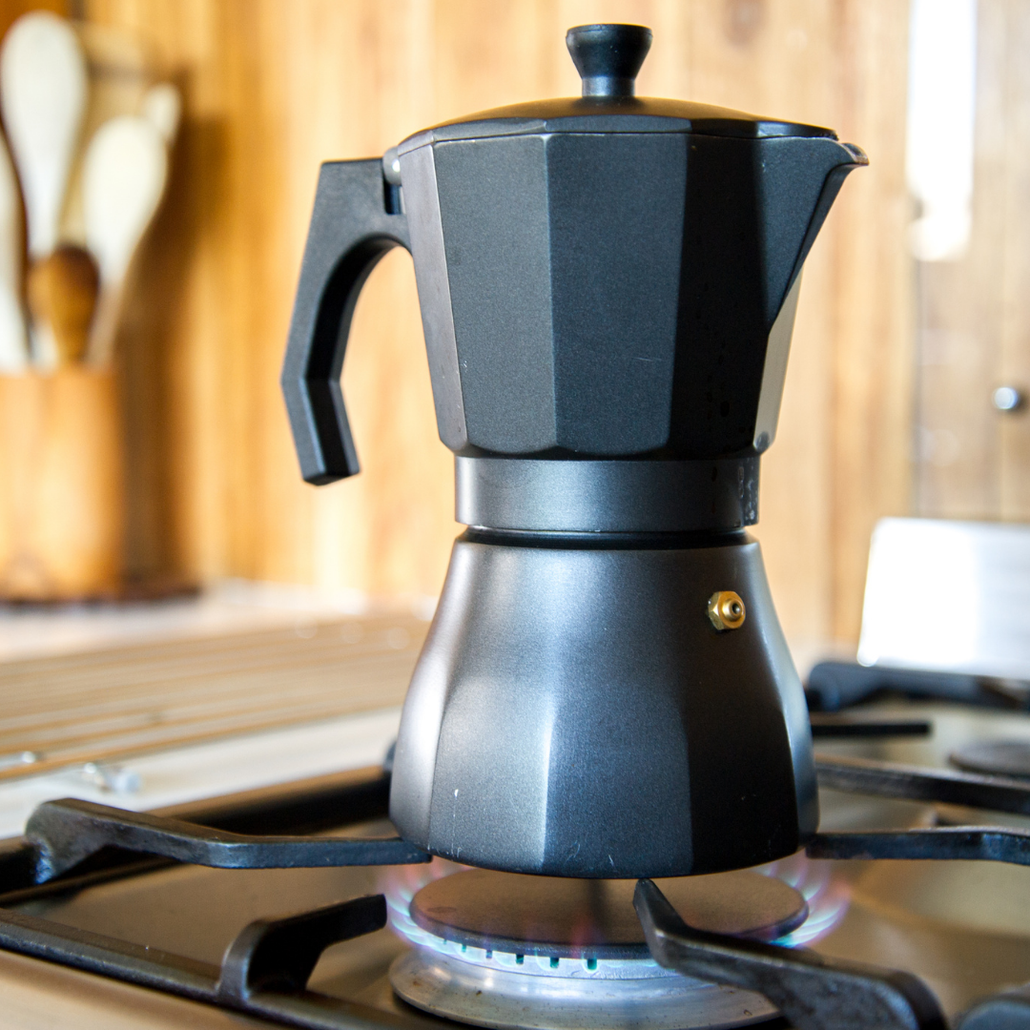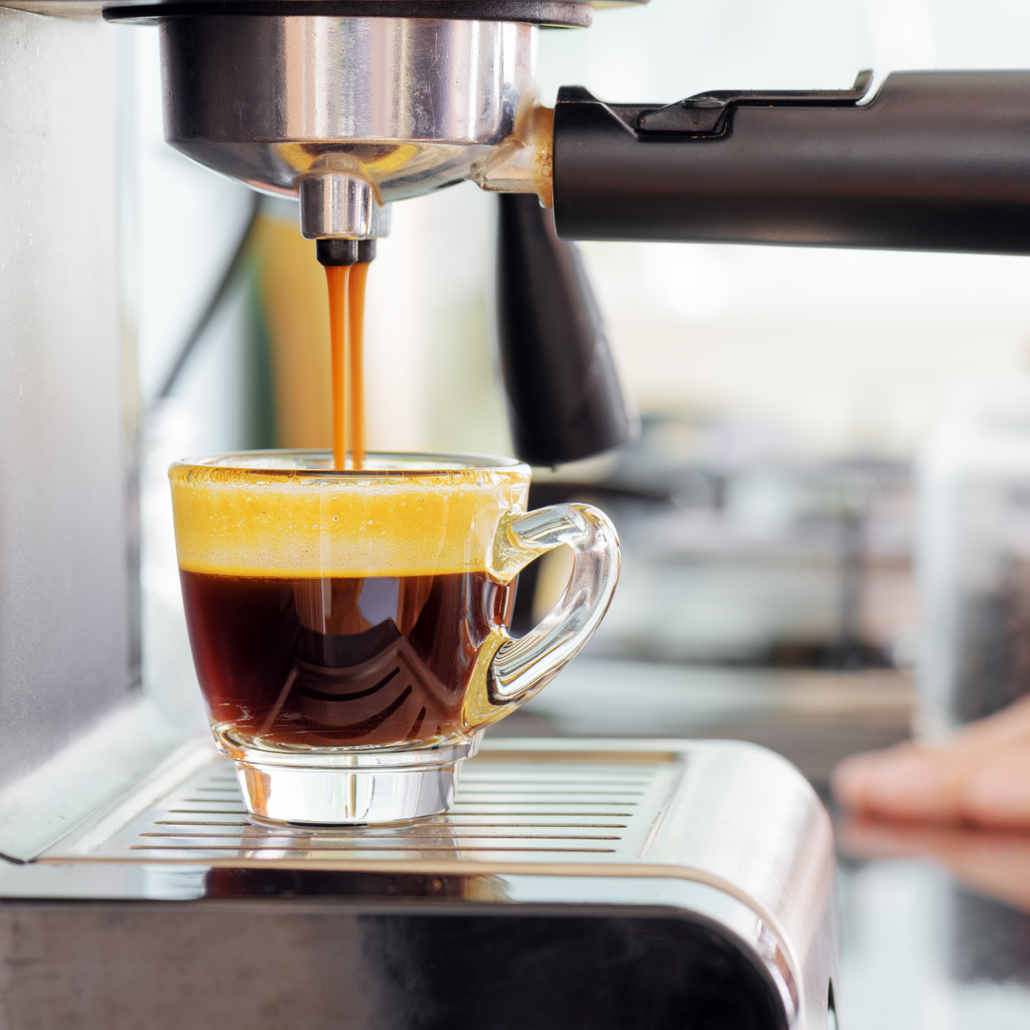FREE SHIPPING ON ORDERS OVER $60
7 Ways to Brew Coffee at Home
From our over and percolator to espresso and cold brew, there are a number of coffee brewing methods out there to satisfy your caffeine fix.
But with so many options, how do you choose the brew method that’s right for you? Ultimately, it comes down to taste, time, technique, and budget. To help you out, we created a list of the most popular home brewing methods. We will walk you through the general brewing process, the necessary equipment, and any other important techniques or tips you should know.
Here are 9 of the most popular home brewing methods.
If you're a fan of strong and full-bodied coffee, the French Press may be the ideal brewing instrument for you. This invention dates back to the 1920s, and it really hasn’t changed much since its inception. It consists of a strainer, a plunger, and a container. The strainer pushes the hot water through the coffee grounds all in the same container.
To use a French Press, first heat some water. Place your ground coffee into the bottom of the French Press (without the plunger top). Pour half of your heated water evenly over the grounds, and let it rest for about 30 seconds. Pour the other half of the hot water over the coffee grounds and place the plunger lid on top now. The plunger should be pulled up all the way at this point. Let it steep for about 4 minutes. After the time is up, press the plunger all the way down. The coffee can be served immediately. For best brewing results, a 1:12 coffee to water ratio is recommended.
The percolator is a traditional American brew method that typically consists of a kettle that has two separate chambers — the upper chamber, which contains a filter for the coffee grounds, and the bottom chamber for the water. Heated water gets forced through a tube that passes over the grounds. Typically, percolator coffee is brewed several times, unlike some other brew methods that just pass the water through the grounds once.
To use a percolator, place your desired amount of water in the bottom chamber, and put your coffee grounds in the filter. Depending on whether you have an electric percolator or a stovetop option, you would either turn it on or place it on a heat source. The heat will essentially do the rest of the work for you. We recommend using 1-2 tablespoons of coarse ground coffee per cup of filtered water.
Turkish coffee is primarily enjoyedin the Middle East, and is made in a copper pot called a cezve.
Turkish coffee is a style of coffee that is prepared with very finely ground coffee, boiling water, and often sugar. This type of coffee is typically made in a copper coffee pot known as a cezve and served in small cups with a side of something sweet.
What’s particularly unique about this brew method is that the coffee grounds are actually not filtered because the grinds are so fine that they become a part of the coffee beverage. The recommended amount of coffee is 2 teaspoons of ground coffee to 1 cup of water. The result is a thick and froth-like texture with a very strong aroma.
Cold brew is designed to be enjoyed cold unlike the rest of the brew methods on this list. Cold brew coffee also differs significantly in taste, as it tends to have a smoother mouthfeel and tastes less bitter than regular coffee. It’s also fuller in body because it’s made as a concentrate, so it's quite dense.
Coldbrew is made by slow-steeping water and coarse coffee grounds for 12 to 48 hours, resulting in a dark and intense cup of coffee. This can be done in a French Press or simply by placing your grounds and water in a mason jar, letting them steep for the desired time, and filtering the grounds with a cheesecloth. The recommended coffee to water ratio for cold brew is 1:4 for a strong concentrate up to 1:8 for straight cold brew.
Another very popular American brewing method is the drip method. This refers to coffee that is brewed through an electric drip coffee maker — one of the most common household appliances. Drip coffee is made by exposing beans to hot water without using excessive pressure. Electric drip coffee makers brew very efficiently and do the majority of the work for you.
To use an electric drip coffee maker, place your desired grounds inside the filter, (which you’ll usually find inside the brew basket), and add your desired amount of water to the tank as well. Then, all you need to do is press the start button, and the coffee machine will do the rest. The recommended coffee to water ratio for drip coffee is 1:15.
Pour over is considered a manual brew method.
With the pour-over method, you have more control over the variables involved in making coffee as compared to the previous methods mentioned. In other words,pour-over is a manual brew method, so a person has to manually facilitate the process. Therefore, you have to heat the water, grind the coffee, and pour the water.
At its very core, pour-over is a coffee-making technique that involves pouring hot water over coffee grounds. The water then flows through a filter and into your vessel of choice (i.e. a mug or carafe). There are a number of pour-over instruments such as the V60, the ORIGAMI Dripper, and the Chemex.
Chemex coffee is an aesthetically pleasing and delicious way to make pour-over coffee.
Chemex is an hourglass-shaped filter coffee brewer invented by Peter Schlumbohm. It’s actually an example of the pour-over method, and if done right, it can yield a very consistent and clean cup of pour-over coffee. What’salso special about the Chemex is that it’s a beautiful brewing tool for anyone concerned about their coffee-making aesthetic.
For the best pour over coffee, opt for a coffee to water ratio of 1:17. As for the grind size, you should aim for a medium-coarse grind for pour over instruments. The grinds will look similar to coarse or rough sand. Note that grinding beans too fine or too coarse will have a significant impact on the flavor of your final brew.
Learn more about how to brew better coffee at home here with this free mini course.
Make delicious coffee or espresso in a Moka pot — an example of the percolator method.
Moka pot is an eight-sided coffee brewing instrument, invented by Alfonso Bialetti. Perhaps the reason it was so beloved then is the same as why it is gaining in popularity now — it makes espresso-like coffee without the need for any fancy equipment. All it requires is the Moka pot itself and access to a heat source.
Moka pot is an example of the percolator method. Water boils in the bottom chamber which eventually builds up enough steam to push itself through a pipe and the middle chamber. It continues to push the water up through another pipe and is finally released into the top chamber as coffee.
In general, use a 1:12 coffee to water ratio for Moka pot coffee. This will yield a strong espresso-like concentrate of about 6.5 ounces. A good place to start is with 13 grams of coffee and 170 grams of water.
Espresso boasts of a strong, bold, and acidic flavor that has a thick foam on top — known as the crema.
Espresso is a very concentrated form of coffee and boasts of a slightly thicker body due to the high grounds to water ratio.
Espresso is made by forcing high-pressure steam speedily through finely-ground coffee beans. It is a very involved process with little time to work with. This process is most often achieved with a machine, but can also be achieved manually (check out the Flair if you haven’t!). The coffee to water ratio for espresso is 1:2 or 1:2.5
To make a good espresso shot, the grounds need to be fairly fine. A good rule of thumb is to find a grind size that matches the texture of granulated sugar. A fine grind will be smooth and overall, will have an overall even tone.
© Copyright 2025 Java Planet Organic Coffee Roasters. All rights reserved.
